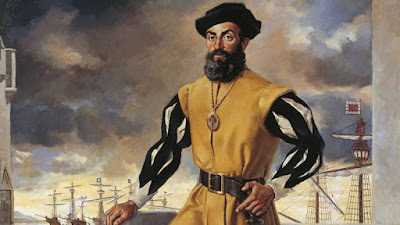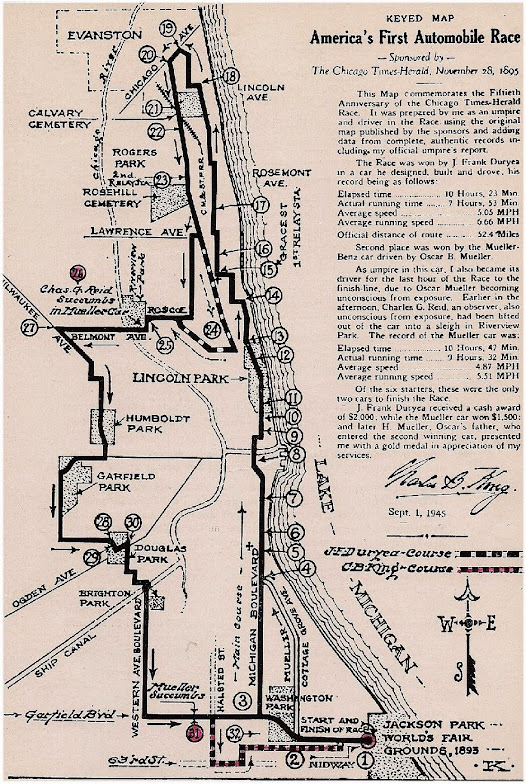On This Date In History
On November 28, 1520, after sailing through the dangerous straits below South America that now bear his name, Portuguese navigator Ferdinand Magellan enters the Pacific Ocean with three ships, becoming the first European explorer to reach the Pacific from the Atlantic.
On September 20, 1519, Magellan set sail from Spain in an effort to find a western sea route to the rich Spice Islands of Indonesia. In command of five ships and 270 men, Magellan sailed to West Africa and then to Brazil, where he searched the South American coast for a strait that would take him to the Pacific. He searched the Rio de la Plata, a large estuary south of Brazil, for a way through; failing, he continued south along the coast of Patagonia. At the end of March 1520, the expedition set up winter quarters at Port St. Julian. On Easter day at midnight, the Spanish captains mutinied against their Portuguese captain, but Magellan crushed the revolt, executing one of the captains and leaving another ashore when his ship left St. Julian in August.
On October 21, he finally discovered the strait he had been seeking. The Strait of Magellan, as it became known, is located near the tip of South America, separating Tierra del Fuego and the continental mainland. Only three ships entered the passage; one had been wrecked and another deserted. It took 38 days to navigate the treacherous strait, and when ocean was sighted at the other end Magellan wept with joy. His fleet accomplished the westward crossing of the ocean in 99 days, crossing waters so strangely calm that the ocean was named “Pacific,” from the Latin word pacificus, meaning “tranquil.” By the end, the men were out of food and chewed the leather parts of their gear to keep themselves alive. On March 6, 1521, the expedition landed at the island of Guam.
Ten days later, they dropped anchor at the Philippine island of Cebu, they were only about 400 miles from the Spice Islands. Magellan met with the chief of Cebu, who after converting to Christianity persuaded the Europeans to assist him in conquering a rival tribe on the neighboring island of Mactan. In fighting on April 27, Magellan was hit by a poisoned arrow and left to die by his retreating comrades.
After Magellan’s death, the survivors, in two ships, sailed on to the Moluccas and loaded the hulls with spice. One ship attempted, unsuccessfully, to return across the Pacific. The other ship, the Vittoria, continued west under the command of Basque navigator Juan Sebastian de Elcano. The vessel sailed across the Indian Ocean, rounded the Cape of Good Hope, and arrived at the Spanish port of Sanlucar de Barrameda on September 6, 1522, becoming the first ship to circumnavigate the globe.
Magellan's ship 'Victoria'
Magellan Strait
On November 28, 1895, piloting a gas-powered “horseless carriage” of his and his brother’s own design, the mechanic, inventor and now racecar driver Frank Duryea wins the first motor-car race in the United States. The race, sponsored by the Chicago Times-Herald, was intended to drum up publicity for the nascent American car industry. It worked, especially for the Duryeas: In the year after the Times-Herald race, the brothers sold 13 of their eponymous Motor Wagons, more than any other carmaker in America.
The race course was originally supposed to loop from Chicago to Waukegan, Illinois, and back (a harrowing 92 miles) but, thanks to the sudden arrival of a spectacular blizzard, race organizers decided to abbreviate the route. (“With eight inches of snow,” one journalist wrote later, “Waukegan might as well have been Timbuktu.”) The racers would be driving just 50 miles, from Chicago to Evanston, Illinois, and back again. The other rules would remain the same: Vehicles had to have at least three wheels, all wrapped in twine to give traction in the snow, and they also had to be able to carry at least two people, the driver and a race-appointed umpire who would ride along to guard against cheating.
Because of the bad weather, only six of 89 racers made it to the starting line: the Duryea; three Benz cars, one sponsored by Macy’s in New York; and two electrics whose batteries died almost immediately after the race began.
About 10 hours after the race began, the Duryea chugged across the finish line. The only other finisher was one of the Benzes (not the one from Macy’s: that one collided with a streetcar on the way to Evanston and with a sleigh and then a hack on the return trip), which sloshed to a finish almost two hours later. The victorious Duryeas won $2,000 and enough publicity to establish themselves as the American motor-car company. From then on, for the Duryeas and all who followed, automobile manufacturing was a business, not just a hobby.
Saturday Evening Post Cartoon - November 28, 1895




%20And%20Charles%20Duryea%20-%201895.png)









No comments:
Post a Comment